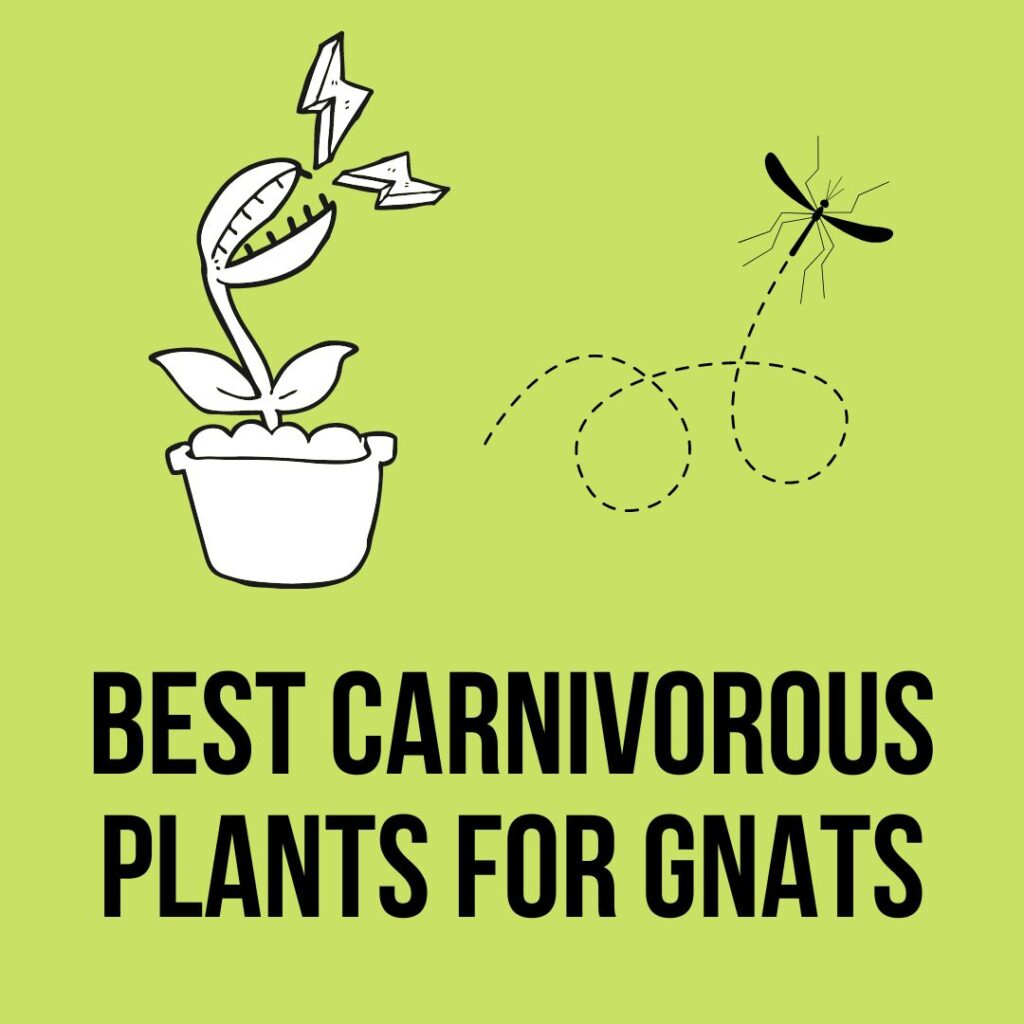People who have houseplants in their homes are likely to have a case of gnat infestations. Gnats are several species of small flies that tend to bite humans and when present in large numbers can stunt plant growth and damage its roots.
The best way to battle this problem is carnivorous houseplants. The purpose of this article is to let you know about some carnivorous plants for Gnats that you can obtain to help with this problem. The type of carnivorous plants to look out for are flypaper or sticky paper plants. Plants that are considered flypaper traps have both sticky nectar and mucilage which help trap any bugs that come into proximity to the plant.
Best Carnivorous Plants For Gnats
Do you have a gnat problem? If so, you’re not alone. Gnats are one of the most common pests in homes and businesses, and they can be really frustrating. Fortunately, there are some great carnivorous plants that can rid your home of these pesky little creatures. In this article, we outline the best Carnivorous Plants for Gnats and explain why they’re such a great option.

Carnivorous plants like the Pinguicula, Drosera, and the Drosophyllum are good examples of flypaper traps that help curb the problem.
The Pinguicula
They are also known as Butterworts “pings” and are native to North America, Europe, Asia, Central America, and South America. They use sticky, glandular leaves to lure, trap, and digest insects in order to supplement the poor mineral nutrition they obtain from the environment. The plants have greasy leaves that curl into a cup that traps the bug inside as enzymes digest it.
They currently have over 80 species worldwide that are suited for both tropical and temperate environments. The plant is somewhat easy to care for. It is at its best in the sun or partial shade and with plenty of water. Butterworts must never dry out.
Butterworts end to experience a dormancy period to regrow and bloom each spring. The dead leaves must be cut after the dormant season to promote growth.
The Drosera
These are also often called Sundews. They are “flypaper” plants that trap prey in sticky hairs on their leaves. They make up one of the largest groups of carnivorous plants. Long tentacles protrude from their leaves, each with a sticky gland at the tip. These droplets look like dew glistening in the sun, thus their name.
The plant is both cute and a great insect exterminator. They have over 150 species which makes them among one of the largest groups of carnivorous plants in the world.
Among the species, Cape sundews tend to be the easiest to cultivate out of all the sundews. Sundews are also one of the easiest plants to grow indoors. It can be found commonly throughout the world but they are more native to boggy areas in Australia.
They thrive the most in sunlight. Indoor plants must be given several hours in the sun per day for the best results. They require moderate watering like many carnivorous plants.
The Drosophyllum
Which are known as Dewy pines and are often found in Portugal and southern Spain. While compared to the Pings and Sundews, the Dewy Pines is much more difficult to care for but they are one of the most successful insect killers in the carnivorous plant world. The leaves it has are incredibly sticky and are often found covered in bugs.
Regardless of the weather, the Dewy pines love the full sun the most. They must be moderately watered with low mineral water, like most of their carnivorous friends.
Miscellaneous
Other plants like the Dionaea or commonly known as Venus flytraps are good possible additions in helping to battle gnat infections.
The venus flytraps are among a few carnivorous plants that move to trap their prey as it snaps their prey shut between two hinged lobes when an insect makes contact with the sensitive hairs located on these hinges.
While they are good hunters, the flytrap has some limitations. Each trap takes up to three to twelve days to digest a single bug. Depending on the problem, there needs to be a considerable number of them, thus not the most efficient option for a difficult infestation.
They do their best outdoors and if grown properly in a sunny location the plant will grow exponentially. Lighting is a significant factor to consider when growing this carnivorous plant since the more light it receives, the healthier it grows.
The Nepenthaceae and Sarraceniaceae species or also known as Pitcher plants feature tubular or pitcher-shaped traps that have slippery substances at the rim that causes the prey to slip into the base of the trap that is covered in digestive fluid.
Due to their obscure smell, it is often recommended to have these plants kept outdoors. The North American pitcher plants (Sarracenia) are among the easiest carnivorous plants to grow and are native to North America. When left outside, it is able to eat a multitude of wasps, moths, and houseflies.
Like the Venus Flytrap, Pitcher plants can be outnumbered and fall to risk should gnats lay eggs on the soil. It is recommended to put a layer of coarse gravel on the soil to cover this blind spot.

Conclusion
Fungus gnats are a common pest. The insects are small and dark-colored and can often be seen flying near the surface of damp soil. Adult gnats are hardly harmful to carnivorous plants, but their larvae can cause significant damage.
Butterworts, Sundews, and Dewy pines enjoy gnats as healthy snacks and are ideal for dealing with infestations. Their roots still need to be protected from any larvae or eggs. The mentioned plants are excellent exterminators for whatever adult gnats are swarming around, ready to plant their eggs in the soil, ruining the rest of your garden.
![3 Best Carnivorous Plants For Gnats [Solved!]](https://gardeningforu.com/wp-content/uploads/2022/07/Best-Carnivorous-Plants-For-Gnats.jpg)